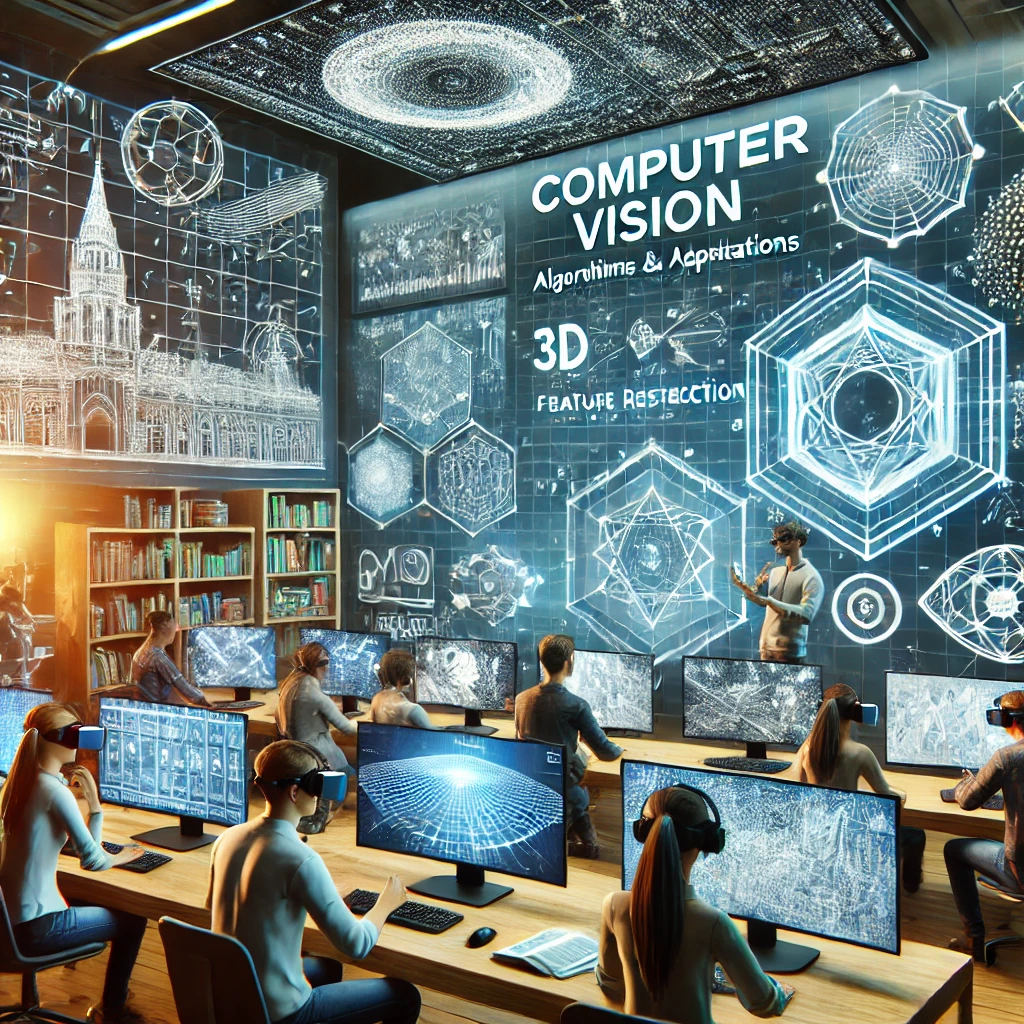If you’re captivated by the idea of teaching machines to see and interpret the world like humans do, then computer vision is a field you should delve into. One of the most comprehensive resources to guide you on this journey is “Computer Vision: Algorithms and Applications” by Richard Szeliski. This book is not only a cornerstone for understanding computer vision but also serves as a reference for Georgia Tech’s esteemed CS 6475 (Computational Photography) and CS 6476 (Computer Vision) courses.
Why Choose This Book?
“Computer Vision: Algorithms and Applications” stands out for several reasons:
- Comprehensive Coverage: The book spans a wide array of topics in computer vision, from the basics of image formation to advanced techniques in 3D reconstruction, motion analysis, and object recognition.
- Practical Approach: Szeliski focuses on algorithms and their practical applications, making the concepts more accessible and actionable for beginners and practitioners alike.
- Rich Illustrations and Examples: The book is filled with diagrams, images, and example code that help to visually and practically illustrate the concepts being discussed.
- Academic Rigor: As a reference for Georgia Tech’s CS 6475 and CS 6476, the book meets high academic standards, ensuring that it provides thorough and accurate information.
Key Topics Covered
- Image Formation and Cameras: Understanding how images are formed and the role of different camera models in capturing images.
- Image Processing: Techniques for enhancing and manipulating images to improve their quality or extract information.
- Feature Detection and Matching: Methods for identifying and matching features within images, which is crucial for tasks like object recognition and 3D reconstruction.
- Segmentation: Dividing an image into meaningful parts for easier analysis and processing.
- Object Recognition: Techniques for identifying and classifying objects within an image.
- 3D Reconstruction: Building 3D models from 2D images, which has applications in fields such as virtual reality and robotics.
- Motion Analysis: Understanding and interpreting motion within image sequences.
Detailed Content and Examples
- Image Formation and Cameras:
- The book explains the pinhole camera model and how lenses work to form images. For example, it describes how different focal lengths affect image perspective and field of view, providing diagrams to illustrate these concepts.
- Feature Detection and Matching:
- Szeliski introduces algorithms like SIFT (Scale-Invariant Feature Transform) and SURF (Speeded-Up Robust Features). These methods are used to detect and describe local features in images, which are then matched across different views for tasks like panorama stitching. The book includes example code and visual results of feature matching in panoramic image creation.
- 3D Reconstruction:
- The book covers stereo vision, where two or more images from different viewpoints are used to reconstruct the 3D structure of a scene. It explains depth map generation and includes examples of 3D models created from image sequences, enhancing the reader’s understanding through practical illustrations.
- Motion Analysis:
- Techniques such as optical flow are discussed, where the motion of objects between consecutive frames is estimated. This section includes examples of tracking moving objects in video sequences, providing both the theoretical foundation and practical implementation details.
Georgia Tech’s CS 6475 and CS 6476
CS 6475: Computational Photography
- This course explores the convergence of photography, computer vision, and computer graphics. It covers topics such as image processing, computational imaging, and camera models.
- Example Project: Students might work on creating high dynamic range (HDR) images by combining multiple exposures, a topic thoroughly covered in Szeliski’s book with detailed algorithms and examples.
CS 6476: Computer Vision
- This course provides a deep dive into computer vision techniques and their applications. It covers image and video processing, feature detection, recognition, and 3D reconstruction.
- Example Project: One of the projects could involve implementing a face recognition system using techniques from the book. The book provides a step-by-step guide on face detection and recognition using Haar cascades and machine learning methods.
How This Book Helps You Get Started
For beginners, the book offers a structured path to understanding the fundamental concepts and techniques in computer vision. Each chapter builds on the previous one, gradually increasing in complexity. The inclusion of real-world examples and practical applications makes it easier to grasp how these techniques are used in various industries, from autonomous driving to medical imaging.
Conclusion
Whether you are a student, a professional looking to pivot into the field of computer vision, or simply a curious mind, “Computer Vision: Algorithms and Applications” by Richard Szeliski is an invaluable resource. It provides the foundational knowledge and practical skills needed to navigate and excel in this fascinating field. By following the insights and techniques laid out in this book, you’ll be well on your way to mastering computer vision.
Start your journey today, and see the world through the eyes of a machine!

